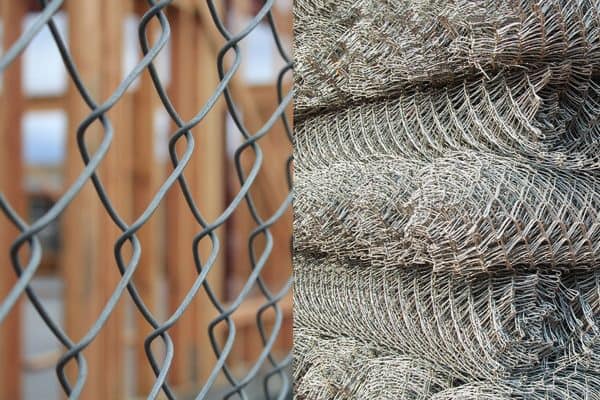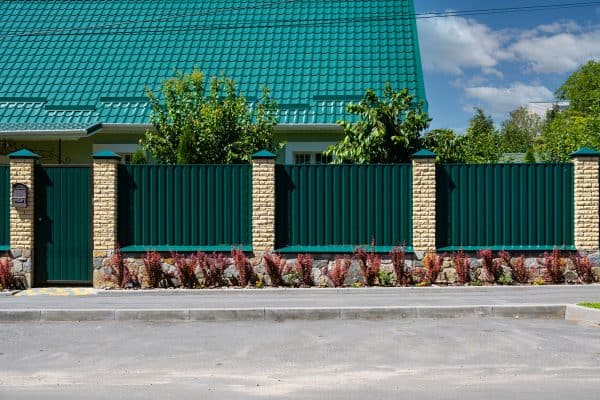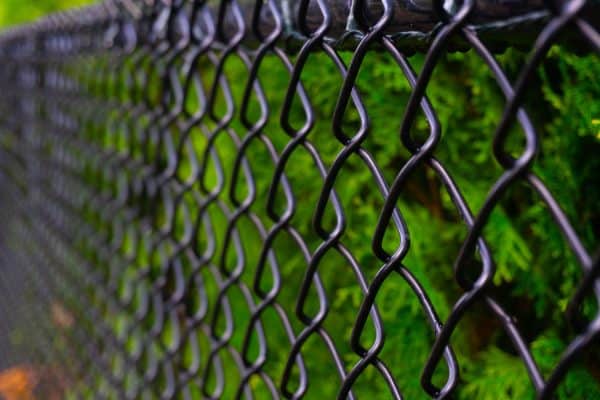Chain-link fences are a popular choice due to their cost, versatility, easy installation, and low maintenance requirements. One important consideration is the strength and durability of the material. For this article, we'll share our research to address how strong are chain-link fences, as well as other pertinent features and characteristics of this fencing material.
The strength of a chain-link fence depends on wire material and size, mesh dimension, and coating. The average lifespan of the structure is between 25 and 35 years. Chain-link fences are considerably more durable than wood but not as strong as steel or wrought iron.
If you have an existing chain-link fence or are considering installing one, this article may prove helpful whether it is your best option. Its strength, durability, and overall features are included to guide you.
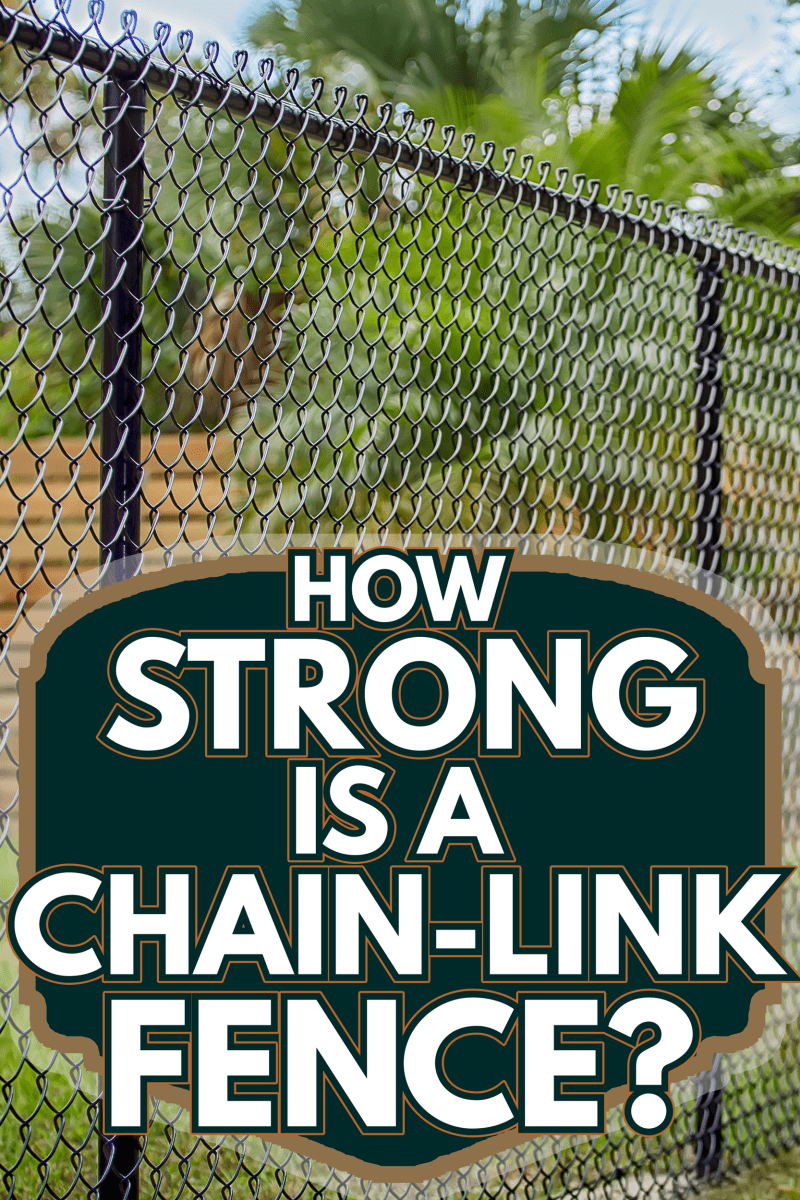
Parts Of A Chain-Link Fence
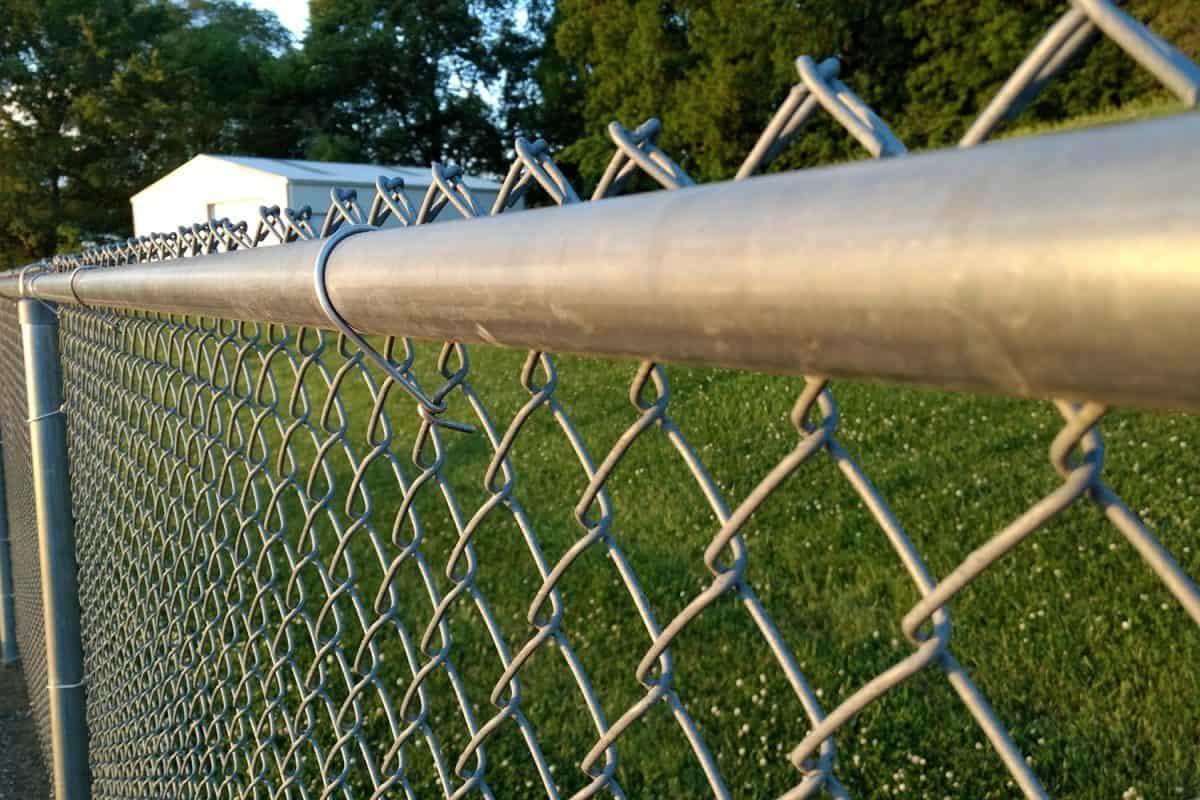
Familiarity with the parts of the structure would enable you to better understand its relative strength, advantages, and appropriate use or application.
The main components of a chain-link fence include posts, woven steel panels, and horizontal rails or tension wires.
1. Posts
Posts function to anchor the entire structure and its foundation greatly affects the strength of your fence. Steel or iron posts are the most durable while wooden ones need to be replaced more often. Regardless of the material, it is best to set them in concrete.
2. Woven Steel Panels
Steel panels are woven in a zigzag pattern to act as the surface of your fence. The diameter size of the wire, designated with gauges, determines the strength of your chain-link fence enclosure. They are the dominant and visible part of the structure and also the most vulnerable to the elements.
3. Horizontal Rails Or Tension Wires
The woven steel panels are connected or affixed to the posts via rails or tension wires. They function to maintain the form of the wire mesh to prevent sagging and deformation. Horizontal rails are recommended rather than tension wires since they provide better stability.
Most chain-link fences feature top and bottom rails which are suitable for low structures, but middle support may be necessary for higher or heavier fences.
Wire Materials For Chain-Link Fencing
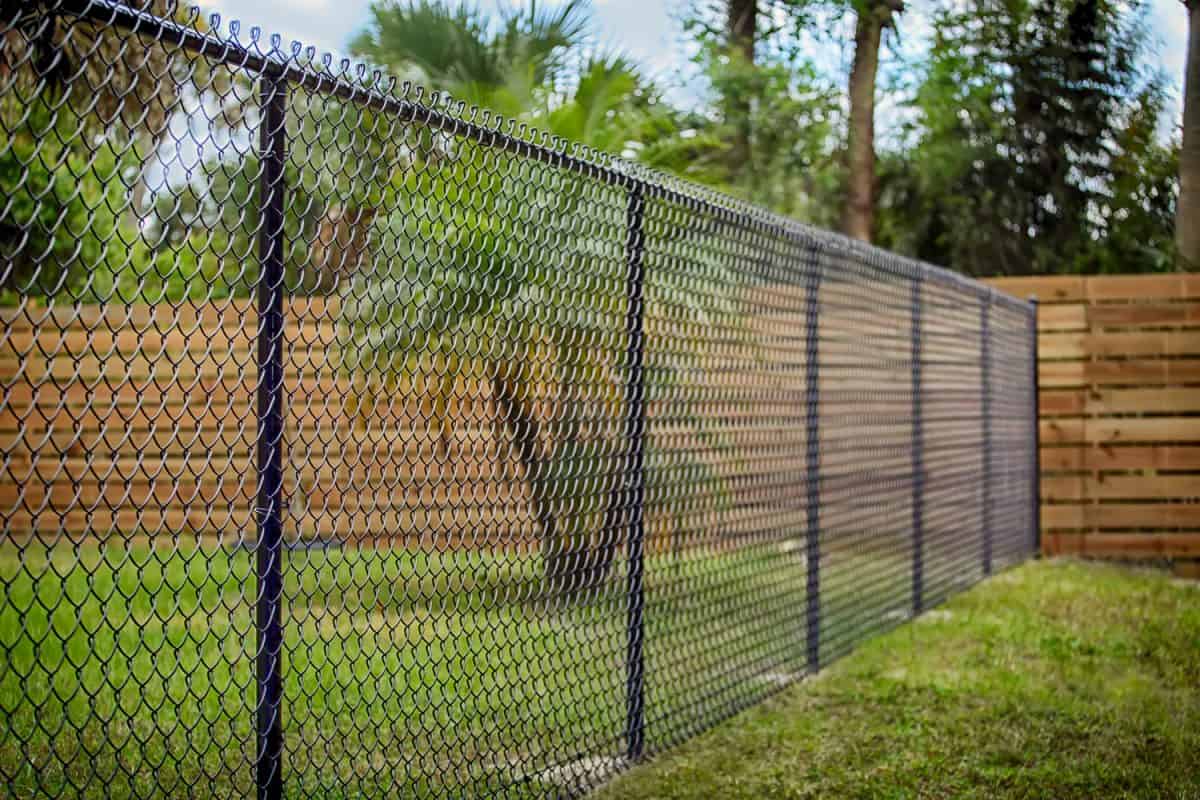
There are several materials that you can consider based on strength, cost, purpose, maintenance, and other factors.
Galvanized Wire
Galvanized metal simply means that the material is dipped in liquid zinc for the purpose of applying a protective layer thus strengthening it and prolonging its lifespan.
This type of treated wire could typically last for 12 to 15 years. Ir requires low maintenance but is relatively weaker than aluminum or steel. It is best suited to demarcate property lines, provide an enclosure, or serve as a deterrent against people or animals.
Aluminum Wire
Aluminum wires last longer because of their inherent resistance to rust and corrosion, extreme weather conditions, and exposure to the elements. A well-maintained fence can easily last up to 25 years or more. This makes it a preferred choice for commercial or public purposes.
Stainless Steel
Stainless steel wires are the strongest and most durable material. Cost aside, they last the longest, maintain form, are weather and rust-resistant, and do not sag easily.
Consequently, they are typically chosen for security and safety purposes and are a common structure for ballparks, airports, and other facilities that require high-grade enclosures.
What is a Wire Gauge?

Wire gauge is a reference for the thickness, quality, and strength of your mesh panels. A lower or smaller gauge actually indicates greater wire diameter, more steel content, and stronger composition.
Manufacturers determine the ideal gauge depending on fence duty -that is, how much stress or force it has to accommodate based on its primary function. Here are the standardized wire diameters available on the market and their corresponding gauges:
| Wire Diameter | Wire Gauge |
| 0.192 inches | 6 |
| 0.148 inches | 9 |
| 0.120 inches | 11 |
Generally, gauge 11 is suitable for residential use, gauge 9 is preferable for commercial fencing, and gauge 6 is ideal for high-security facilities. You can, however, choose a lower gauged wire for your home to improve strength and durability.
Just keep in mind, that the lower the gauge, the thicker the diameter, and the stronger the wire.
Mesh Size
The panel of your chain-link fence forms a diamond-patterned layout. The mesh size is the distance between the parallel wires of the diamond.
A small mesh size implies that the diamond formed is smaller and the wires closer together. It also determines the amount of steel in the material. Hence, the smaller the mesh, the stronger the fence. The available sizes range from 3/8 of an inch to 3-1/2 inches.
Coating
To improve the strength of the wire material, extra protection is provided by paints and plastic coatings. Coating dampens the effect of climate and prevents early corrosion.
Paint
Painting your fence provides extra protection against the elements and improves its appearance. However, if you apply it after the fence has been installed, there are certain disadvantages.
- First, it is difficult to evenly paint a chain-link fence.
- Second, you may actually have to clean it first, and manually applied paint only lasts five years.
Pre-painted mesh mataerials are available, they are dipped and treated to ensure coat thickness and uniformity resulting in a longer lifespan. It may be pricier but can actually prove more convenient and cost-effective in the long run.
Plastic Or PVC
Plastic or PVC coatings are offered by most manufacturers as a strengthening feature to the fencing material. They seal and protect more efficiently than paint and last longer mainly because they are introduced into the wire mesh before it is woven or interlinked.
What are Alternative Fences You Can Use?
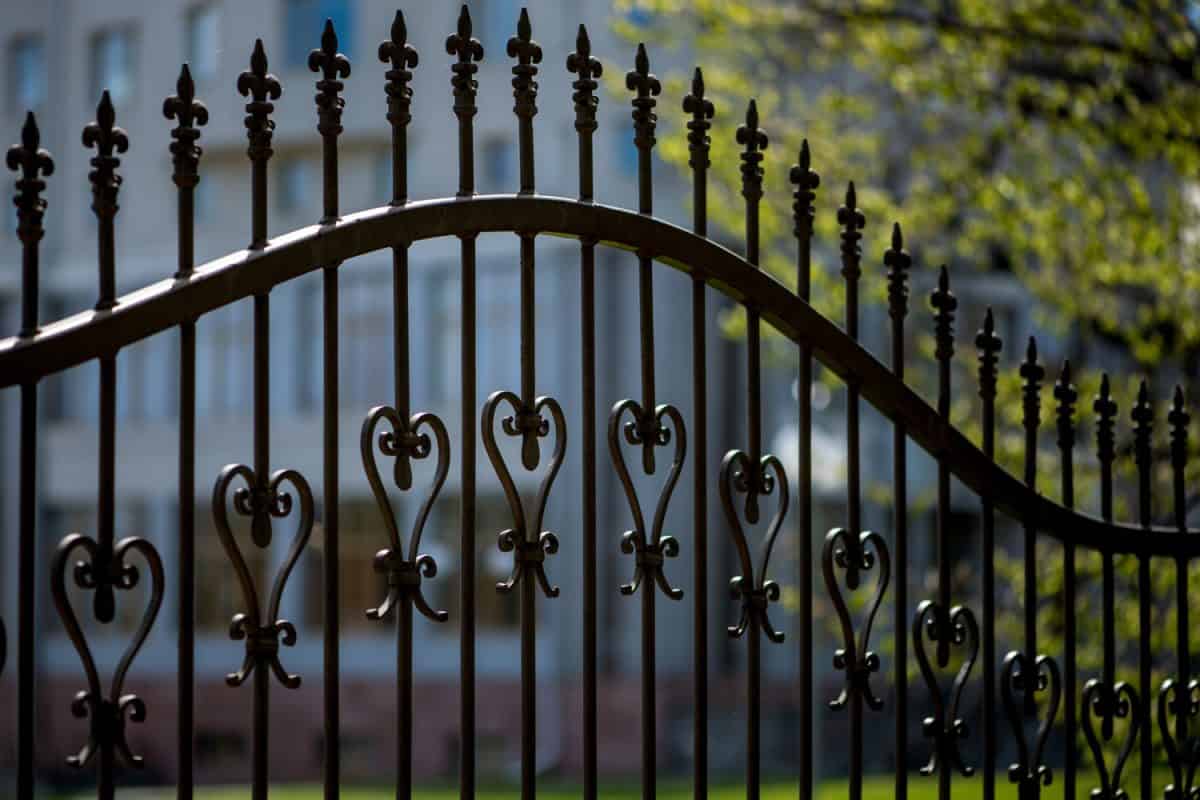
Since your main concern is the strength of the structure, here are some alternatives you might consider apart from a chain-link fence.
Metal
Metal fences are made from steel or iron, both of which are noted for strength and durability, low maintenance needs but higher cost. Well-kept enclosures can last up to 50 years or longer. They provide great security, safety, and, with a closed design, better privacy.
Aluminum
Aluminum fences are durable, lightweight, easy to install, and versatile. Depending on the quality and manufacturer, they can last between 20 to 30 years. But aluminum fencing can potentially exceed its average lifespan thru proper care and maintenance.
Aluminum is a soft metal and is not usually recommended for high-impact purposes. It is ideal for residential areas.
Wrought Iron
Wrought iron is the strongest, and heaviest but also the most expensive material for fencing. This is due mainly to the repeated strengthening process that renders it highly durable and resistant to weather, corrosion, and wear. They can easily last a lifetime, which, when considered, makes it a worthy choice.
Other Fencing Considerations For Durability
Chain-link fences are generally strong or durable enough to maintain their structure, function, and purpose. Here are some ways to optimize the strength of your fence:
Posts
We have previously discussed the significance of posts in providing the anchor of your fence. Here are some specifics.
If your fence is six feet high, the depth of the post beneath the ground should at least be two to three feet deep. Always set your posts in concrete. Provide temporary braces to keep the posts in place while the concrete foundation hardens.
The distance between two posts should not exceed 12 feet -the higher the fence, the closer the gap.
Frames
The fencing frame affixes the wire mesh to the posts and maintains the form and tension of your panels. Fences that exceed 10 feet should include a middle rail or supporting wire.
Wire Mesh

Since this provides the enclosure for your fence, maintain and monitor the individual links regularly. Look out for worn or corroded portions and replace them immediately. Rust tends to spread and affect the adjacent components.
In Conclusion
Chain-link fences are considerably strong and durable. There are several options in terms of material specifications that may prolong their lifespan. Care and maintenance also factor in its longevity. We hope that the article addressed your concern.

